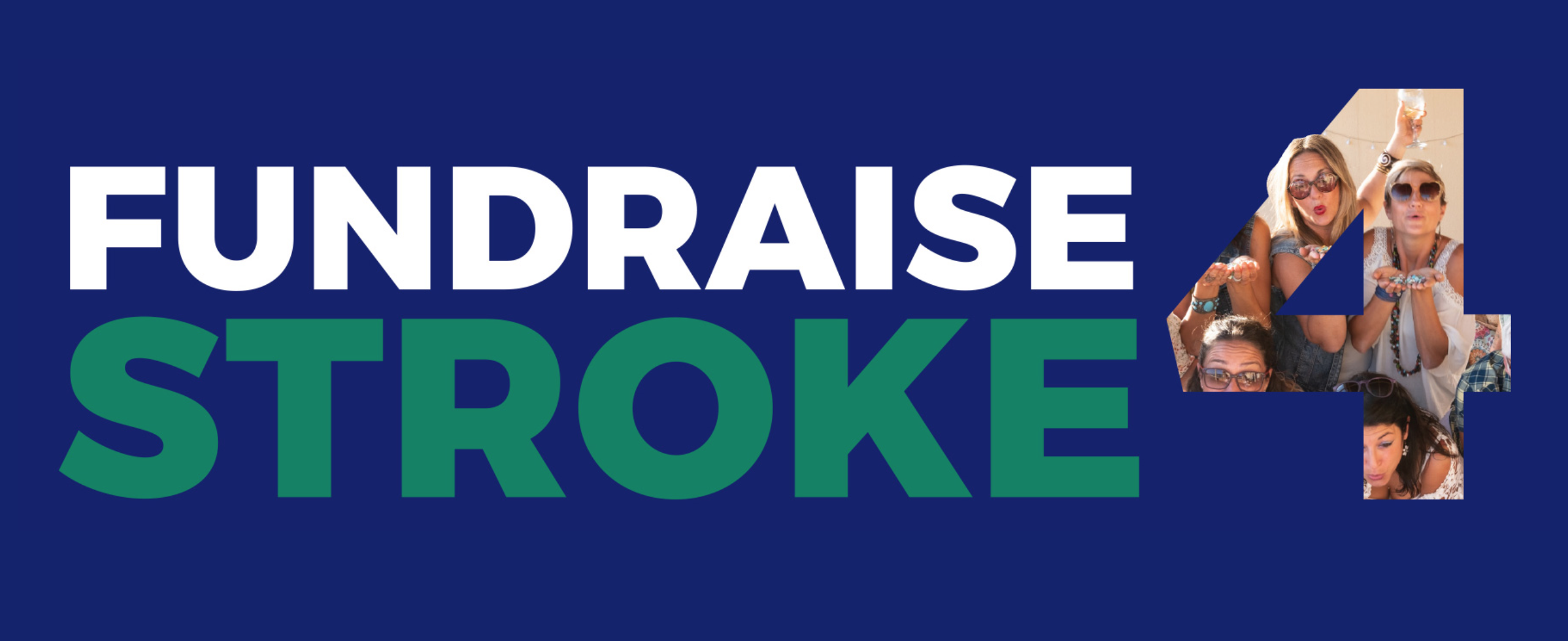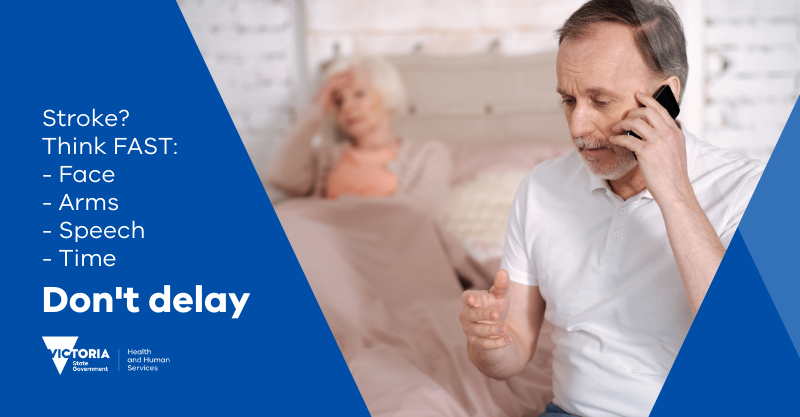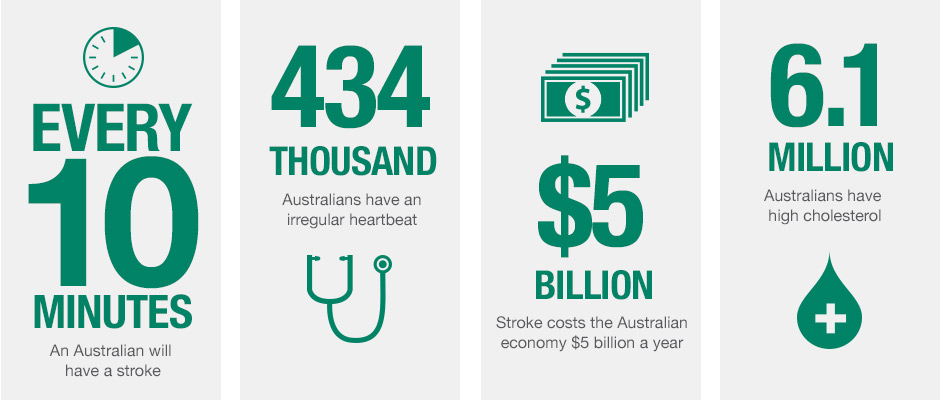This October the Leeming Spartan Cricket Club is fundraising for stroke research, and it is our goal to assist the Stroke Foundation in raising awareness and funds to prevent, treat and beat stroke.
This year there will be almost 56,000 new and recurrent strokes – that is one stroke every 9 minutes!
Stroke is one of Australia’s biggest killers and a leading cause of disability. It kills more women than breast cancer and more men than prostate cancer.
With your support, the Stroke Foundation can provide support to those affected right now and fund research to help prevent stroke, save lives and enhance recovery. Any donation goes directly to the Stroke Foundation, and from one not-for-profit to another, we are delighted to have the opportunity to support this amazingly important cause!
We’re asking all followers to consider donating something, anything at all, to this important fundraiser. The Leeming Spartan Cricket Club has set up its own page on the Stroke Foundation Website that will allow you to make donations with all proceeds going to the foundation.
Simply click here to view the page and make a donation! Or you can read on below to learn more about strokes and how it affects people.
What Is A Stroke?
Stroke attacks the brain – the human control centre – changing lives in an instant.
Your brain is fed by blood carrying oxygen and nutrients through blood vessels called arteries. A stroke happens when blood cannot get to your brain, because of a blocked or burst artery. As a result, your brain cells die due to a lack of oxygen and nutrients.
How does it affect people?
Stroke attacks the brain, the human control centre.
The brain is divided into areas which control different things. The impact of the stroke depends on the area of the brain it damages. Damage to an area of your brain can impact how you think, behave, use words, swallow, see, feel, touch, and move your body.
It is important to note though a stroke affects everyone differently. Stroke can happen to anyone of any age. Men are at greater risk of stroke and as we get older our risk increases.
In saying that, stroke is preventable for many. Some of the causes within our control include high blood pressure, being overweight, smoking, high cholesterol, a high intake of alcohol and diabetes.
Signs Of A Stroke:
How do you know if someone is having a stroke? Think… F.A.S.T.
The Stroke Foundation recommends the F.A.S.T. test as an easy way to remember the most common signs of stroke. Using the F.A.S.T. test involves asking these simple questions:
-
- Face: Check their face. Has their mouth drooped?
- Arms: Can they lift both arms?
- Speech: Is their speech slurred? Do they understand you?
- Time: Is critical. If you see any of these signs call 000 straight away. What to do while you wait for an ambulance
Other Signs Of Stroke:
Facial weakness, arm weakness and difficulty with speech are the most common symptoms or signs of stroke, but they are not the only signs.
The following signs of stroke may occur alone or in combination:
- Weakness or numbness or paralysis of the face, arm or leg on either or both sides of the body
- Difficulty speaking or understanding
- Dizziness, loss of balance or an unexplained fall
- Loss of vision, sudden blurring or decreased vision in one or both eyes
- Headache, usually severe and abrupt onset or unexplained change in the pattern of headaches
- Difficulty swallowing
Sometimes the signs disappear within a short time, such as a few minutes. When this happens, it may be a transient ischaemic attack (TIA). After a TIA, your risk of stroke is higher. Stroke can lead to death or disability. A TIA is a warning that you may have a stroke and an opportunity to prevent this from happening.
If you or someone else experiences the signs of stroke, no matter how long they last, call 000 immediately.
Think F.A.S.T., act FAST
A stroke is always a medical emergency. The longer a stroke remains untreated, the greater the chance of stroke-related brain damage.
What to do while you wait for an ambulance?
Stroke is a medical emergency. If you or someone else shows the signs of stroke, call 000 immediately.
While you are waiting for the ambulance to arrive:
- If the person is conscious, lay them down on their side with their head slightly raised and supported.
- Do not give them anything to eat or drink.
- Loosen any restrictive clothing that could cause breathing difficulties.
- If weakness is obvious in any limb, support it and avoid pulling on it when moving the person.
- If they are unconscious, check their breathing and pulse and put them on their side. If they do not have a pulse or are not breathing, start CPR straight away.
- If you are unsure how to perform CPR, the ambulance call taker will give instructions over the phone.
A number of questions are asked while you wait for the paramedics to arrive. Here is an emergency dialogue used in New South Wales, provided by the Ambulance Service of NSW.
- Are they completely awake?
- Are they breathing normally?
- Are they able to talk normally?
- Tell me why you think it’s a stroke
- When was the last time they were acting normally?
- Have they ever had a stroke before?
Post-dispatch instructions: “I’m organising the paramedics to help you. Please stay on the line and I’ll tell you exactly what to do next.”
Effects Of Stroke:
Every stroke is different. Each person affected by stroke will have different problems and different needs.
There are several factors that determine the effects of a stroke and that impact recovery. These factors include:
- type of stroke
- location of the blocked or burst artery
- which area of the brain is damaged
- how much brain tissue is permanently damaged
- general health before the stroke
- level of activity before the stroke
Each half of the brain is divided into areas called lobes. The different areas control different functions of your body. These functions include how you move your body, receive sensory messages (such as touch, sight or smell), use language and think.
Because different arteries supply different areas of the brain, where the brain is damaged will determine which functions are affected.
The left half of the brain (left hemisphere) controls most functions on the right side of the body, while the right half of the brain (right hemisphere) controls most functions on the left side.
How stroke can affect you:
Some of the problems people may have after a stroke include:
- Weakness on one side of the body, including arms and legs
- Problems controlling or coordinating movements (also arms and legs)
- Ignoring one side of your body, which is called neglect
- Difficulties swallowing food, drink or your own saliva
- Personality and behaviour changes
- Having uncontrollable outbursts of emotion without cause, which is called emotional lability
- Problems with thinking, memory and insight
- Difficulty receiving messages from your senses – smell, touch, taste, sight and hearing
- Problems speaking and understanding, or with reading and writing
- Feeling worried about having sex or having physical changes that make it difficult
- Vision loss
- Incontinence
- Fatigue








